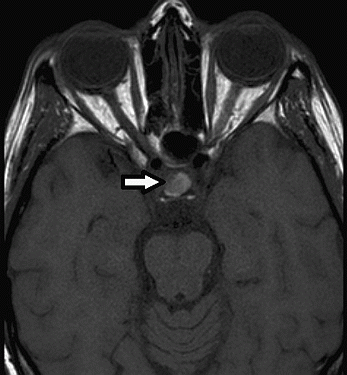SFEBES2012 Poster Presentations Pituitary (43 abstracts)
Recurrent hypoglycaemia in a young lady with type 1 diabetes - an unusual cause
Rashmi Manjunatha , Hiang Tan & David Barton
Diabetes and Endocrinology, Princess Royal Hospital, Telford, United Kingdom.
Introduction: Hypoglycaemia is a common event encountered in patients with type 1 diabetes usually due to an imbalance between diabetic therapy, activity level and dietary intake.
Case: We report a case of a 31-year old lady with 20-year history of type 1 diabetes on basal-bolus regimen of insulin, who presented with a 2 month history of secondary amenorrhoea and recurrent disabling hypoglycaemia despite significant reduction in insulin doses. Clinical examination was unremarkable. Routine haematology, biochemistry, serum inflammatory markers and chest radiograph were normal. Coeliac screen was negative. A short synacthen test failed to show an adequate cortisol response (baseline, 30 and 60 min cortisol of 27, 113 and 166 nmol/l). Static pituitary profile showed an ACTH of <5 ng/L indicating secondary hypoadrenalism, an inappropriately normal TSH, low fT4 and fT3 , low gonadotrophins and a normal prolactin. An MRI confirmed a pituitary macroadenoma with high signal on T1, suggestive of recent hemorrhage. In view of absence of neuro-ophthalmic signs, she was managed conservatively with a plan to rescan the pituitary in 12 months. She was established on hydrocortisone and thyroxine replacement. Discussion: Classical pituitary apoplexy is characterized by sudden onset headache, vomiting, visual impairment and decreased consciousness caused by infarction or haemorrhage into a pituitary gland. However, pituitary haemorrhage and/or infarction can be largely asymptomatic. In our patient, the only presenting symptom was recurrent disabling hypoglycemia caused by secondary adrenal insufficiency due to hemmorhage into the pituitary adernoma.
Conclusion: This case highlights the fact that pituitary hemorrhage can be largely asymptomatic and an abnormal short synacthen test should always be evaluated further with ACTH levels to differentiate between primary and secondary hypoadrenalism.
Declaration of interest: There is no conflict of interest that could be perceived as prejudicing the impartiality of the research reported.
Funding: No specific grant from any funding agency in the public, commercial or not-for-profit sector.

MRI pituitary showing haemorrhage in a macroadenoma
 }
}



